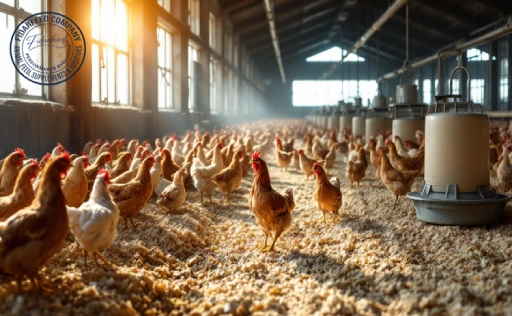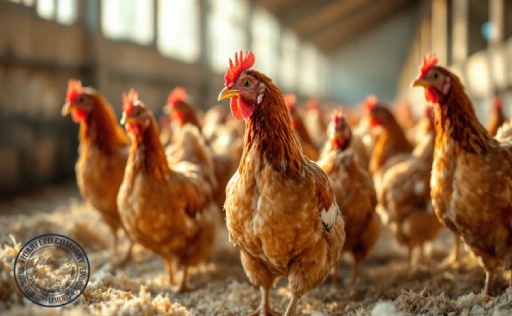
Dorper Sheep Farming is rapidly gaining attention across the livestock sector — and for good reason. Whether you’re an experienced sheep breeder or just beginning your journey, raising Dorper sheep offers a smart, sustainable path to producing high-quality meat while maximizing your profit potential. Known for their adaptability, efficiency, and outstanding meat characteristics, Dorpers are not just a trend; they are a solution to many of the modern challenges faced in the sheep farming and feed industry.
In this article, we’ll walk you through every important aspect of Dorper sheep farming — from breed traits and feeding strategies to marketing and financial planning. If you’re looking for a reliable and profitable livestock venture, keep reading. This could be your next big move.
Why Choose Dorper Sheep Farming for Profit and Productivity?
When it comes to meat production, Dorper sheep check all the boxes. Originally developed in South Africa, this breed was specifically designed to thrive in harsh climates and deliver rapid growth. Unlike some traditional wool sheep breeds, Dorpers are raised primarily for meat — and that’s where their true value lies.
Learn more about: Active Probiotic Yeast for Large animal
Dorper sheep grow fast, convert feed efficiently, and require less maintenance due to their self-shedding coat. This means lower labor costs and less stress during shearing season. For breeders focused on return on investment, this efficiency directly translates to higher margins.
Additionally, their hardiness makes them an excellent choice for areas with variable pasture quality, reducing the risks associated with seasonal fluctuations in feed availability.
Understanding the Unique Traits of Dorper Sheep
What sets the Dorper apart from other meat sheep breeds?
First, let’s talk about growth rate. Dorper lambs can reach slaughter weight — often 35 to 45 kg — in as little as 3 to 4 months under optimal conditions. That’s impressive and translates into quicker cash flow for farmers.
Learn more about: The Ultimate Guide to Sheep Farming Equipment
Secondly, Dorper meat is well-marbled, tender, and low in fat — qualities that meet the growing consumer demand for healthy, premium protein. In blind taste tests, Dorper lamb has consistently scored higher than other breeds.
Moreover, this breed’s strong immune system and resistance to parasites make it ideal for both extensive and semi-intensive systems. For example, a study published in Small Ruminant Research found that Dorper lambs had significantly lower mortality rates compared to Merinos in similar grazing conditions.
Setting Up a Profitable Dorper Sheep Farming Operation
Getting started doesn’t have to be overwhelming — but it must be strategic. Begin by selecting high-quality breeding stock. Look for animals with a strong build, good posture, and a history of rapid weight gain. Trusted breeders or agricultural fairs can be excellent sources.
Learn more about: The Essential Guide: How Do Sheep Help Farmers?
Next, evaluate your land. Dorpers do well in both arid and temperate environments, but good pasture management is essential. Divide grazing areas into paddocks to allow for rotational grazing — this enhances grass regrowth and reduces parasite buildup.
Don’t forget infrastructure. You’ll need basic shelter, secure fencing, and clean water access. Keep it simple but functional — your goal is to minimize stress on the animals and optimize labor efficiency.
Feeding Strategies to Maximize Meat Quality and Growth Rates
Feed plays a critical role in determining meat quality and profitability. Dorpers can adapt to various feeding systems, from open grazing to total mixed rations. However, a balanced diet rich in energy, protein, vitamins, and minerals will accelerate weight gain and improve meat tenderness.
Learn more about: The Complete Guide to Sheep Farming for Beginners
If you’re working with natural pasture, consider supplementing with quality hay and grain during dry seasons. In feedlot systems, corn, soybean meal, and a vitamin mix can provide excellent results.
A 2021 study from the University of Pretoria found that Dorper lambs on a supplemented feed regime gained 20% more weight over 60 days compared to those on pasture alone — a compelling case for strategic supplementation.
Health Management for Dorper Sheep: Prevention Equals Profit
Healthy sheep grow faster, breed better, and yield higher-quality meat. Prevention is always more cost-effective than treatment. Start with regular vaccinations — especially against clostridial diseases — and develop a parasite control plan in consultation with a local vet.
Learn more about: How to Treat Ringworm in Sheep and Lambs: A Complete Guide
Routine hoof trimming, shelter sanitation, and monitoring for signs of illness should become part of your weekly checklist. Keep detailed records for each animal. This not only helps in managing health but also improves breeding decisions.
Stress is a silent killer — not just for sheep, but for your profits too. Handle your animals gently and avoid overcrowding to minimize cortisol levels, which negatively affect weight gain and immune response.
Breeding Techniques That Boost Flock Productivity
A productive flock starts with planned breeding. Aim for a 3-lambs-in-2-years model by optimizing the ewe’s body condition and timing breeding seasons for optimal pasture availability.
Learn more about: The Complete Guide: How to Run a Successful Sheep Farm
Selective breeding is where long-term profit lies. Use performance data to identify ewes and rams that consistently produce fast-growing, healthy lambs with high carcass yields. Artificial insemination (AI) and embryo transfer (ET) are also gaining popularity among advanced breeders looking to rapidly improve genetics.
Efficient Handling and Low-Stress Management for Better Meat Yield
Good handling systems reduce labor costs and improve meat quality. Install handling facilities like raceways, pens, and weighing stations designed for calm movement.
Stress before slaughter can drastically reduce meat quality, causing dark cutting or “DFD” meat — dry, firm, and dark — which is undesirable in the market. Calm, familiar environments, proper transport protocols, and reduced handling before processing help ensure your Dorper meat meets premium standards.
Marketing Dorper Meat: Building a Brand Around Quality
High-quality meat deserves premium prices — but only if marketed correctly. Create a brand story around your Dorper sheep: pasture-raised, hormone-free, or ethically farmed.
Connect directly with consumers at farmers markets, restaurants, or via social media platforms. Many breeders now use QR codes on packaging that link to behind-the-scenes videos — a great way to build trust and showcase quality.
Learn more about: Solving Rumen Health Problems in Sheep with Probiotics
If you’re supplying wholesalers, emphasize your product consistency and ability to meet volume requirements. Professional packaging, clear labeling, and strong relationships with distributors can set your brand apart.
Calculating Costs and Profits: Is Dorper Sheep Farming Worth It?
Profitability depends on both planning and execution. Let’s break it down:
-
Initial costs: breeding stock, fencing, water systems, shelter.
-
Recurring costs: feed, health care, labor, marketing.
-
Revenue: primarily from meat sales, but also breeding stock, manure, and by-products.
On average, well-managed Dorper operations yield a return on investment of 15–25% annually. Many breeders report full cost recovery within the first 2 years.
The key? Keep detailed records. Monitor feed-to-weight ratios, lambing intervals, and market prices. With solid data, you can adjust quickly and stay ahead of the curve.
Learn more about: Mitigating Heat Stress in Sheep: Practical Solutions
Expert Tips for Long-Term Success in Dorper Sheep Farming
-
Invest in learning: Attend workshops, talk to other breeders, and keep up with industry research.
-
Adapt to your environment: Tailor your practices to your land, climate, and market demands.
-
Plan for scale: Once you master a small operation, consider expanding with a focus on efficiency, not just numbers.
-
Embrace innovation: Technologies like EID tags, digital farm management software, and AI breeding tools can streamline operations and improve results.
Conclusion
Dorper sheep farming is more than just raising animals — it’s a smart business model for producing high-quality meat with excellent returns. By focusing on breed strengths, efficient feeding, proper health management, and targeted marketing, both new and seasoned breeders can tap into a highly rewarding venture.
Are you currently raising Dorpers or considering getting started? We’d love to hear from you. Drop a comment below, share your experience, or ask any questions you may have — let’s grow this community of passionate, profitable sheep breeders together!







